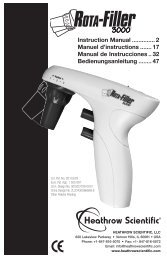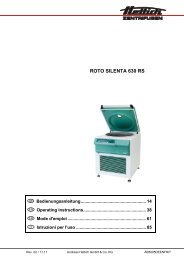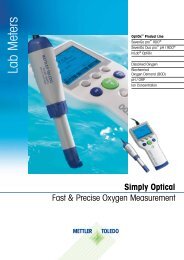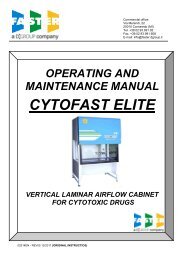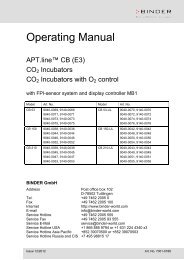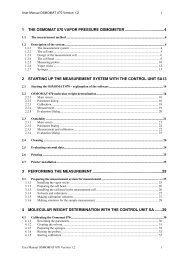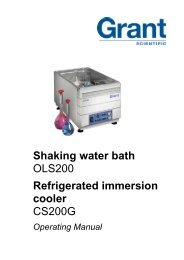User Guide
User Guide
User Guide
You also want an ePaper? Increase the reach of your titles
YUMPU automatically turns print PDFs into web optimized ePapers that Google loves.
OSMOMAT 3000<br />
Design and function<br />
3.2 Measuring method basics<br />
Osmolality<br />
Freezing point depression<br />
Cosm = ΔT / K<br />
26 Version 1.02 04/24/2013<br />
The device measures the total osmolality of any aqueous solution.<br />
The total osmolality indicates the concentration of all osmotically active<br />
substances (such as salts, dextrose, proteins) per kilogram of<br />
water.<br />
The osmolality is specified in mOsmol/kg.<br />
The device determines the total osmolality of the sample solution<br />
based on the freezing point depression. The implemented measuring<br />
method is a relative measuring method.<br />
The freezing points of distilled water and an aqueous solution are<br />
measured and compared. The osmolality of any solution is determined<br />
using a linear function defined by 2- or 3-point calibration.<br />
The freezing point of a solution is depressed by adding soluble or<br />
mixable substances.<br />
The freezing points of pure water and a solution are measured and<br />
compared. Whereas water has a freezing point of 0°C, a solution with<br />
a saline concentration of 1 osmol/kg has a freezing point of -1.858°C.<br />
That means that one mol of a given non-dissociated substance<br />
(6.023 x 10 23 parts diluted in one kilogram of water) lowers the freezing<br />
point of a solution by 1.858°C.<br />
The following definitions are used in calculating osmolality:<br />
Cosm = osmolality [osmol/kg]<br />
T = freezing point depression [°C]<br />
K = 1.858°C kg/osmol freezing point constant



